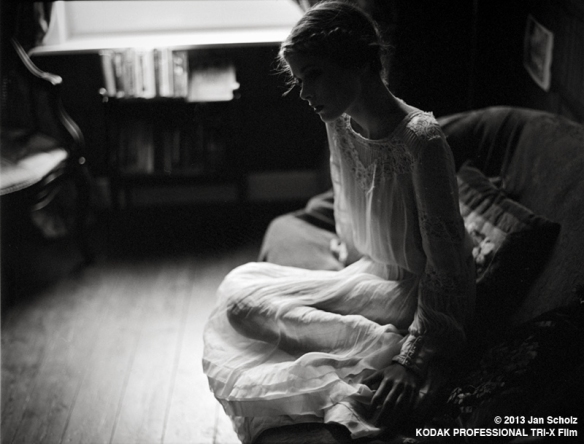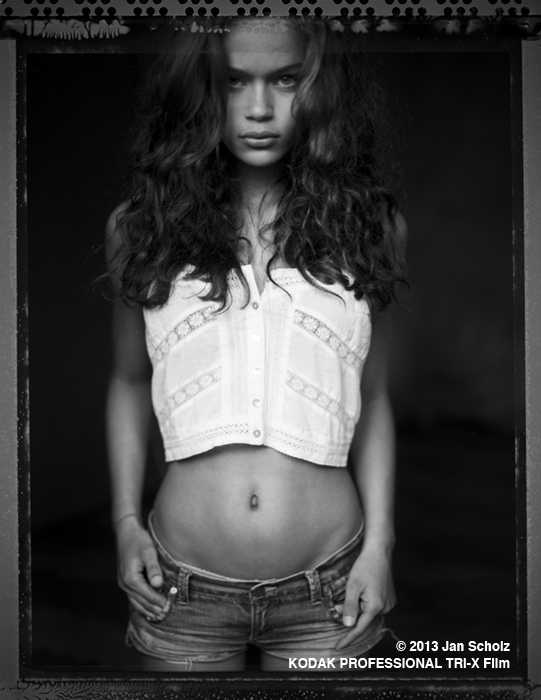This Sunday, the final episode of FILM! will air, bringing to a close another season filled with not just beautiful photographs, but also with emotions, insights and advice from some wildly talented photographers. We got to spend some time with Ryan Muirhead, one of the original hosts of the series, who we were fortunate enough to meet a few years ago. One of the things we’ve admired so much about Ryan, beyond his gift for photography, is his willingness to share, teach and inspire others with his work.
Q: What camera and equipment do you use?
A: I shoot with a Leica M7, a Pentax 67ii, a Pentax 67, a Nikon fe2 and a Contax T2. I love trying everything.

Q: What are you trying to achieve with your photography?
A: I have always wanted it to feel like song lyrics — relatable yet unspecific. I really don’t know what I am trying to achieve yet, right now I just want to make beautiful, meaningful images and share my passion for film and photography.
Q: When did you first discover your passion for photography?
A: My father was a camera operator on movies and TV shows as I was growing up. I worked for a few years as a camera assistant in Utah and California, but never in a creative capacity. I took my first creative picture ever in 2006 on the set of a movie during lunch. About a month after that photography was consuming all of my free time.
Q: How did you first become interested in KODAK Film?
A: I enrolled in a class about shooting film in school kind of out of the blue. The teacher was adamant that everyone should be shooting Fuji but I had grown up using and loading KODAK Film on movies and I loved the look. A few years ago, I met reps from Kodak Alaris, who gave me some KODAK Film to start using. A few months later my images were used for the ad campaigns for the new Portra 400 and 160 films. I now shoot almost exclusively KODAK Films with a few very low speed or very high-speed exceptions. I have also been using KODAK 500T movie film in my still cameras.
Q: How do you have your film developed and scanned?
A: I currently use Indie Film Lab in Montgomery, Alabama for all of my color and black and white film scanning/developing.
Q: What approach do you take with your photography or what does photography mean to you?
A: I try to shoot as much as I can. I think it’s the only way to have a personal style. To shoot so often and in enough varied circumstances so that your style has a chance to find you. I have very documentary tendencies. Even in the shoots I am staging or directing I still try to wait and capture how people move or stand naturally.

Q: That’s a very intriguing comment. Can you say something more about how that process of self-discovery seems to be working out for you?
A: I have been thinking about this a lot lately. Photography is so dependent on science that there seems to be two different halves to the experience, the gear side and the expressive side. So much is said back and forth about how much the gear you are using matters and it is, of course, all-important and not at all important. If we didn’t have cameras we would make no pictures, but when we worry exclusively about what our gear can do we lose what we are bringing to the table.
This is the most attractive element of film and Leica to me. I load the camera with a specific film type and then I can set my aperture and shutter speed and that is it. Everything else that comes to the image must come from me. I love forcing myself into that minimalism so that what I am feeling has the best chance to incorporate itself into the image. Finding that this was the best way for me to shoot was not always clear to me. None of us begin shooting knowing what the best way for us to express ourselves will be. I think that is the greatest drawback to the DSLR revolution. Millions of unique and nuanced artists are shooting on the exact same camera with the same three zoom lenses. Many of them produce amazing work, but I wonder how their vision might change if they picked up a field camera, a TLR, a rangefinder, a Polaroid camera. Filmʼs greatest strength seems to be that there are so many ways of arriving at an image.
Q: As a photographer who came of age in the digital era, what particularly attracted you to film and why do you shoot it exclusively? What color films do you like? How about black-and-white?
A: I love film both for the look of it and for how it makes me shoot. Portraits are all about connection with the subject and I find all the menu items, buttons and, of course, the screen to be a distraction. I like everything stripped down: minimal lighting, simple settings, honest moments. I want this to apply to my cameras too — an aperture setting and a shutter speed setting is enough for me. As far as color negative films go, my favorites are KODAK PROFESSIONAL PORTRA 160 and 800 Films. The new PORTRA films are styled after the Kodak cinema films that I grew up around. I love the latitude, the fine grain, the performance under mixed light, everything. Lately I have re-fallen-in-love with KODAK PROFESSIONAL TRI-X Film. It’s just so perfectly classic. If I could only shoot one film for the rest of my life it would be TRI-X without a doubt.

Q: Several of your images can be described as fashion portraits. What has drawn you to that genre which you say youʼve “never felt a part of” and what is motivating you to explore documentary photography?
A: I really struggle to place myself within a genre. I shoot a lot of models and work with a lot of stylists, but I have never felt my work really fit into the fashion or editorial genres. Fashion photography is inherently about the clothes and my work is inherently about the face. Everything I love about photography is in capturing the human face. It is endlessly diverse and expressive. I love the challenge that documentary photography presents. One of my favorite ways to practice or learn is to limit the amount of control I have. To shoot one camera, or one film, or one lens; to try and take away all the options we are constantly presented with and make my mind the only variable. With documentary photography you traditionally have very little control over many of the elements and you really have to assert yourself to make it your photograph.
Q: How do you think the courses in your photography program have influenced your work? Have you been exposed to any photographic work that you see as a source of inspiration?
A: School has been a blessing and a curse to me. I love the exposure to other artists and professors and how it forces you to work, but I have never performed well in a structured environment. I was constantly shooting what I wanted and trying to bend the assignments to fit what I was going to shoot anyway. One of the best things about school was being exposed to the work of the masters. Seeing and studying Avedonʼs “In the American West” has been the single most influential moment of my photographic life. It embodied everything I wanted my work to be.

Q: You stated that you shoot “people almost exclusively.” What is it about photographing people that you find especially compelling and satisfying? Do you think that the discipline of shooting abstract compositions, nature subjects, scenic vistas, etc. can be helpful in developing techniques for shooting better people pictures?
A: The human form and more specifically the human face is the ultimate subject.
Hamlet put it best:
“What a piece of work is a man! How noble in reason, how infinite in faculties, in form and moving how express and admirable, in action how like an angel, in apprehension how like a god! The beauty of the world…” I am constantly and consistently drawn to the face. I love the connection that happens when I try to express something I am feeling via another person. The connection and validation experienced at its most successful is unsurpassed.
Q: How do you see your photography evolving in the immediate future and over the next few years?
A: I am hoping to do more documentary and large format work in the coming months. I also hope to rededicate myself to taking even more pictures of my friends and family, as they are the most important part of my life. Above all I want my work to be personal.
You follow Ryan Muirhead on Twitter (@rnmphotography), Instagram (@ryanmuirhead) and Facebook https://www.facebook.com/ryanmuirheadphotography



























